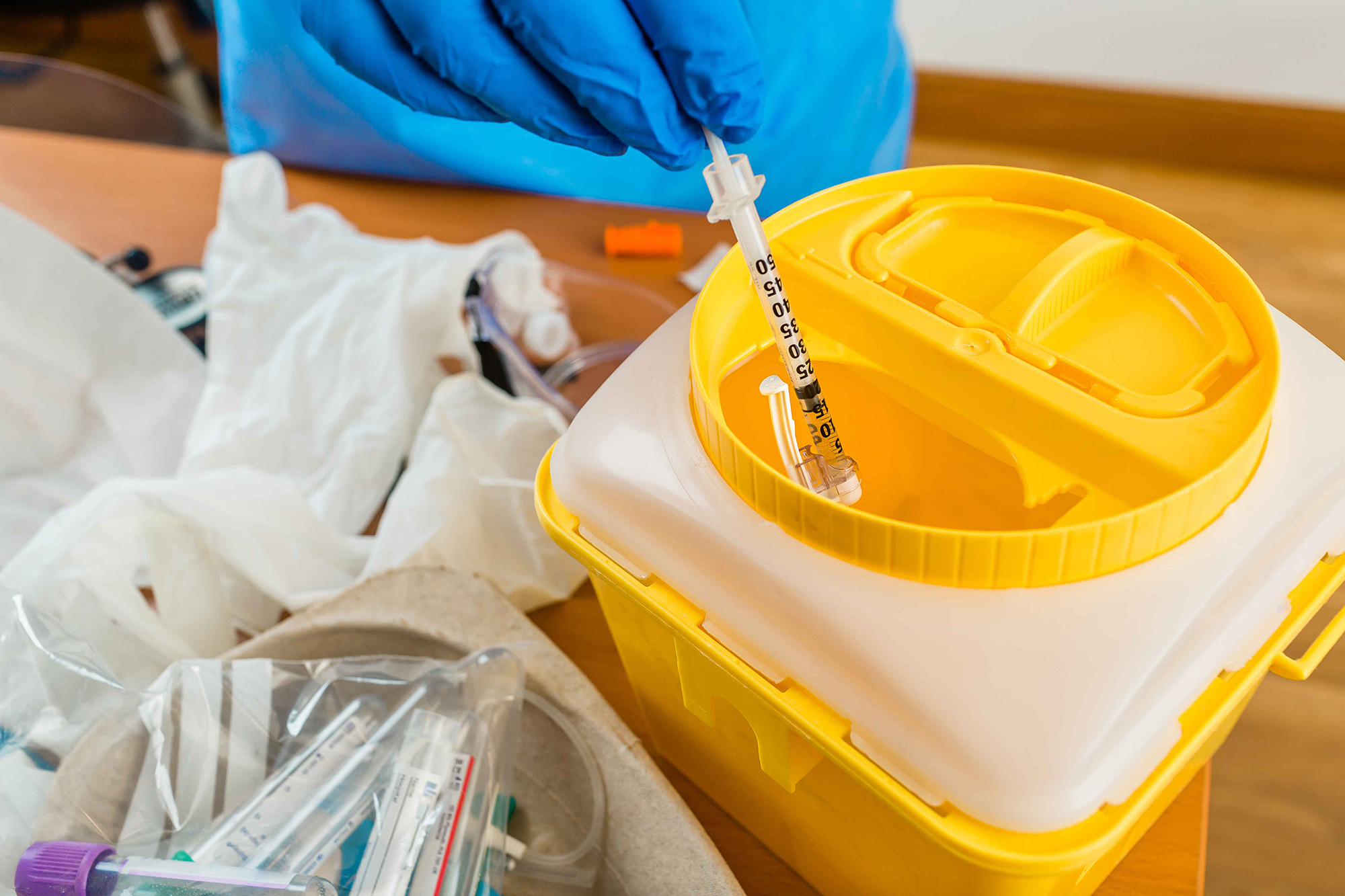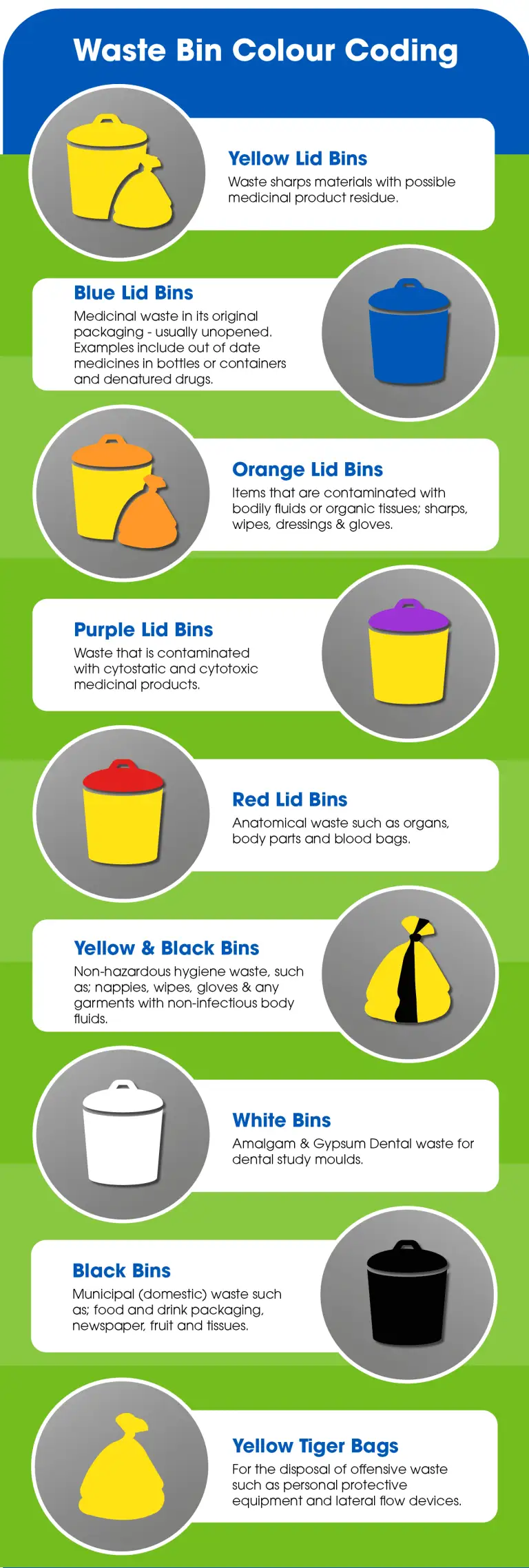Finest Practices for Medical Waste Monitoring
Clinical waste monitoring is a vital aspect of healthcare centers' procedures to make sure the safety of individuals, personnel, and the setting. Carrying out best methods in clinical waste administration is vital to reduce the threats linked with unsafe waste.

Partition and Categorization
In the field of medical waste management, appropriate partition and categorization are important methods for ensuring the secure and effective disposal of healthcare-related products. Clinical waste is produced from numerous sources, including hospitals, facilities, laboratories, and other health care centers. It includes a wide variety of items, such as needles, syringes, bandages, gloves, and pharmaceutical waste.
Segregation involves the systematic splitting up of different kinds of medical waste based on their attributes and possible dangers. This process assists to protect against cross-contamination and guarantees that each kind of waste is taken care of appropriately. Sharps waste, such as needles and blades, must be positioned in puncture-resistant containers to avoid injuries and the spread of contagious conditions. Likewise, contagious waste, such as blood-soaked plasters or societies, must be set apart and dealt with separately to decrease the threat of spreading virus.
Classification is the process of identifying clinical waste right into various groups based upon its possible threats. These groups might consist of transmittable waste, contaminated materials, pharmaceutical waste, and basic waste. By classifying waste, health care facilities can establish the appropriate disposal approaches and guarantee conformity with neighborhood guidelines and guidelines.
Proper partition and categorization of medical waste not just safeguard the health and wellness of medical care workers and the basic public yet additionally contribute to the overall effectiveness and performance of waste monitoring. It reduces the threat of accidents, decreases environmental effects, and advertises responsible garbage disposal methods.
Correct Storage Space and Labeling
To ensure the efficient and safe disposal of clinical waste, healthcare facilities have to stick to appropriate storage and labeling practices. WasteX Medical Waste Disposal. Proper storage space and labeling play a vital function in keeping the stability of medical waste monitoring systems and shielding the health and wellness of healthcare employees, individuals, and the public
When it comes to storage, it is necessary to have designated areas especially designed for various sorts of clinical waste. These locations must be secure, well-ventilated, and geared up with suitable containers that meet regulatory criteria (medical waste disposal service). Partition and categorization of waste need to likewise be taken into consideration to avoid cross-contamination and prospective threats

Normal surveillance and examination of storage space locations and containers are vital to identify any concerns or violations. Team should be educated on proper storage and labeling methods, emphasizing the importance of compliance with policies and methods.
Safe Transport and Handling
Making certain the proper and safe and secure transport and handling of clinical waste is important for keeping the integrity of waste administration systems and protecting the health and safety of all entailed. Medical waste, that includes products infected with infectious products, pharmaceuticals, and various other dangerous substances, must be transported in a way that avoids leakages, spills, and prospective contamination.
It is important to utilize leak-proof and puncture-resistant containers that are specifically made for clinical waste. In addition, waste needs to be segregated based on its nature and kind to stop cross-contamination.
Throughout transport, it is essential to guarantee that waste containers are safely fastened and stored in a secure fashion. Autos used for transporting medical waste must be furnished with ideal security functions, such as spill control systems, to lessen the risk of any leakages or spills. Chauffeurs must obtain training on correct handling and emergency feedback procedures to efficiently attend to any unforeseen occurrences.
Furthermore, the transport and handling of clinical waste must follow all relevant policies and standards established forth by regional, state, and government authorities. WasteX Medical Waste Disposal. medical waste disposal. Routine assessments and audits must be conducted to assess compliance and recognize any kind of locations for renovation
Compliance With Regulatory Guidelines
Keeping conformity with regulatory guidelines is necessary for efficient medical waste management. These standards are put in place to shield public health and wellness and the environment by ensuring that clinical waste is effectively handled, treated, and disposed of. Conformity with regulative guidelines assists to protect against the spread of transmittable illness, reduce prospective hazards, and minimize the general impact of clinical waste on the atmosphere.
To achieve compliance, healthcare centers have to remain notified about the particular policies controling clinical waste administration in their territory. These regulations may differ from country to country, and also within various states or regions. It is essential for healthcare centers to have a comprehensive understanding of these standards and to apply appropriate approaches and methods to guarantee compliance.
One secret facet of compliance is the correct segregation and labeling of various sorts of medical waste. This includes separating sharps from various other waste, as well as classifying waste based on its possible dangers. Medical care facilities need to also make certain that clinical waste is kept in appropriate containers which these containers are effectively classified and sealed.
Furthermore, compliance with regulative guidelines requires medical care centers to establish appropriate training and education programs for staff members associated with medical waste monitoring. This includes providing training on waste partition, handling, and disposal procedures, as well as the proper use personal protective devices.
Regular tracking and audits are additionally vital to ensure ongoing conformity with regulatory guidelines. This involves performing regular assessments of waste storage space locations, documenting waste administration treatments, and maintaining records of garbage disposal.
Effective Disposal Approaches
Medical care facilities should employ efficient disposal approaches for correct monitoring of medical waste. Incorrect disposal of clinical waste can pose serious health and environmental threats. There are a number of techniques that can be utilized to properly get rid of medical waste, making certain the safety and security of health care workers, clients, and the public.
One generally used approach is incineration. Burners can safely melt clinical waste at high temperature levels, lowering the volume and destroying any Continued type of possibly damaging virus. Incineration can be expensive and might launch hazardous pollutants into the air if not correctly regulated.
One more approach is autoclaving, which involves subjecting the waste to high-pressure heavy steam. This process kills microorganisms, viruses, and other microbes, making the waste safe for disposal in regular waste streams. Autoclaving is a eco pleasant and efficient method, however it needs customized tools and qualified personnel.
Chemical sanitation is additionally made use of in some cases, where fluid chemicals are related to the waste to disinfect it. This method is much less generally used due to issues about the efficiency of chemical sanitation and the possibility for chemical residues to contaminate the atmosphere.
Along with these methods, health care centers ought to additionally implement appropriate segregation, product packaging, and labeling of clinical waste to guarantee its risk-free handling and disposal. Routine training and education of staff on correct waste management methods are important to maintaining efficient disposal techniques.
Conclusion
To conclude, carrying out ideal techniques for medical waste management is essential for making sure the safety of healthcare employees, people, and the atmosphere. By correctly segregating and classifying waste, storing and classifying it appropriately, ensuring risk-free transportation and handling, following regulative guidelines, and using reliable disposal methods, health care facilities can effectively handle and decrease the threats connected with medical waste. It is crucial for medical care organizations to adhere and focus on to these ideal practices to keep a safe and lasting health care environment.
Medical waste administration is an important element of health care centers' procedures to make sure the safety of individuals, personnel, and the atmosphere. Applying best techniques in clinical waste administration is necessary to reduce the risks connected with hazardous waste. These groups might consist of contagious waste, unsafe waste, pharmaceutical waste, and basic waste.In final thought, carrying out best practices for clinical waste administration is important for making certain the safety and security of health care workers, clients, and the environment. By properly setting apart and categorizing waste, saving and labeling it properly, making sure secure transport and handling, conforming with regulative guidelines, and employing effective disposal methods, health care centers can efficiently handle and decrease the dangers connected with clinical waste.